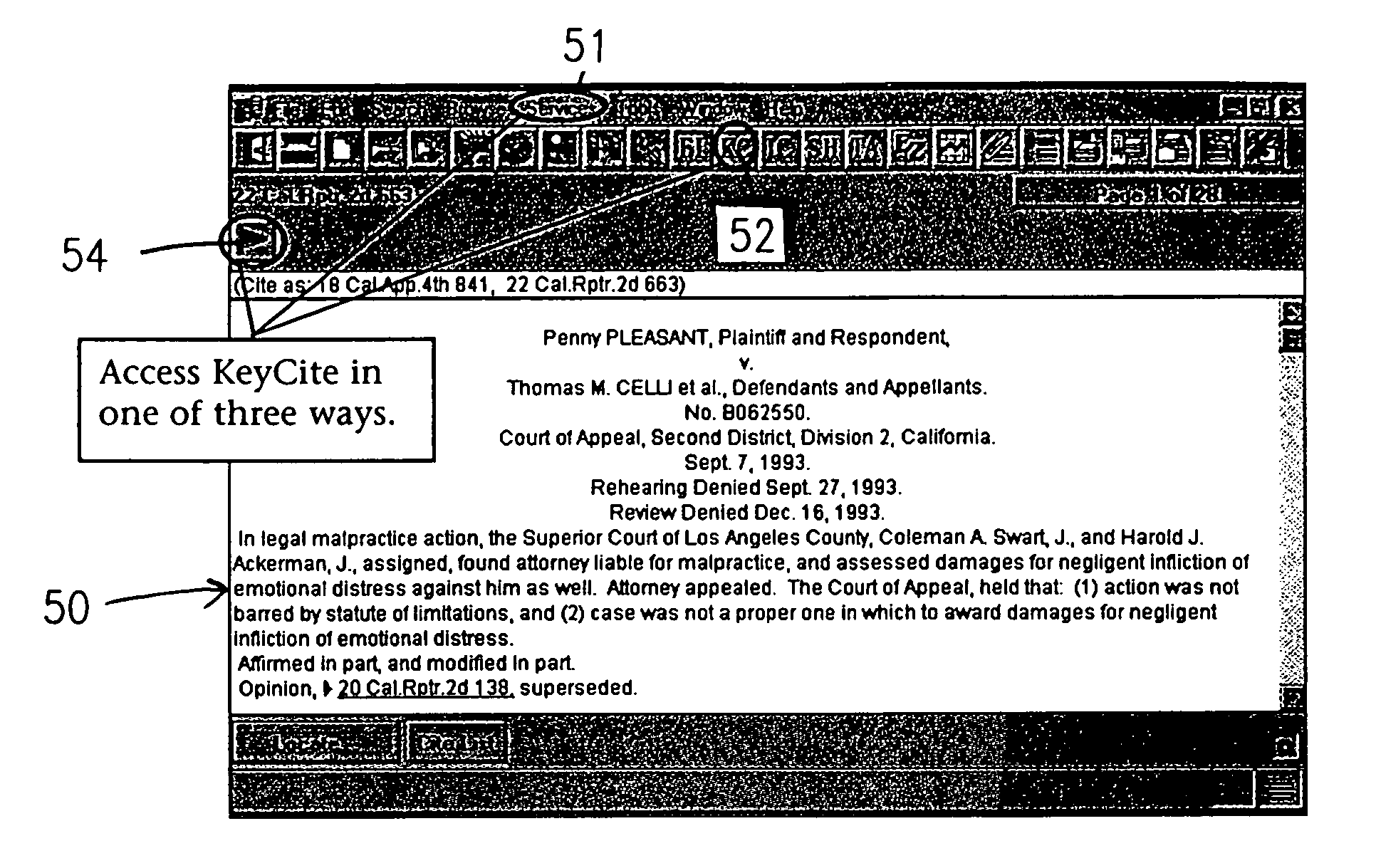System and method for processing formatted text documents in a database
- Summary
- Abstract
- Description
- Claims
- Application Information
AI Technical Summary
Benefits of technology
Problems solved by technology
Method used
Image
Examples
Embodiment Construction
[0027]The invention is particularly applicable to a computer-implemented legal text processing system and method for semi-automatically identifying characteristics, such as citations and quotations, within a legal document and identifying relationships between the legal document and other legal documents stored in the database. The legal document may be a legal case, a statute, a law review article, an ALR article or a legal treatise. It is in the context of a legal case that the invention will be described. It will be appreciated, however, that the system and method in accordance with the invention has greater utility and may be used for different legal documents.
[0028]Before describing the preferred embodiment of the invention, a brief description of the terminology that will be used to describe the invention will be provided. Any reported decision of a legal case is presumed to be an authoritative statement of the law when it is written. Then, later events may affect the authorit...
PUM
 Login to View More
Login to View More Abstract
Description
Claims
Application Information
 Login to View More
Login to View More - R&D
- Intellectual Property
- Life Sciences
- Materials
- Tech Scout
- Unparalleled Data Quality
- Higher Quality Content
- 60% Fewer Hallucinations
Browse by: Latest US Patents, China's latest patents, Technical Efficacy Thesaurus, Application Domain, Technology Topic, Popular Technical Reports.
© 2025 PatSnap. All rights reserved.Legal|Privacy policy|Modern Slavery Act Transparency Statement|Sitemap|About US| Contact US: help@patsnap.com



